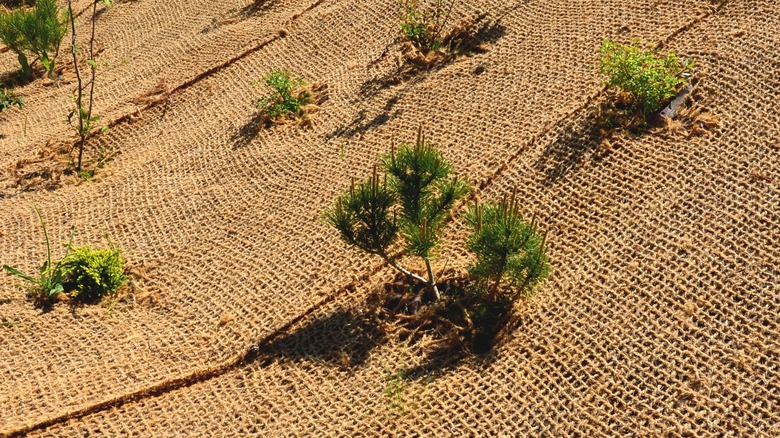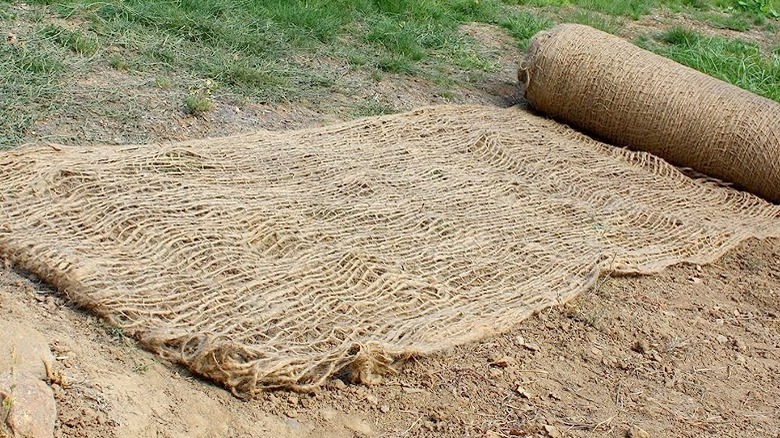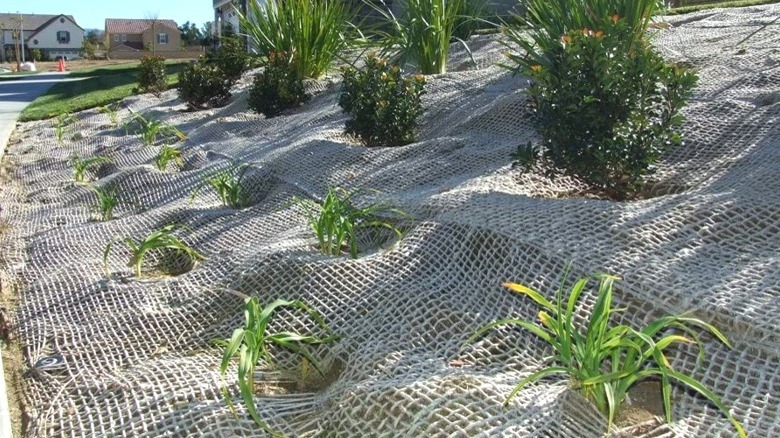What Is Jute Mesh And How Can You Use It?
We may receive a commission on purchases made from links.
If you've got a green thumb and take great pride in growing a healthy garden, chances are it's won quite a few prizes and is the prettiest on the block. But climatic conditions like heavy rainfall or wind speed might contribute to topsoil erosion and prevent you from achieving satisfactory results from trendy landscaping ideas. If that's the case, you can try out a jute mesh. Wondering if it's made of the same material as your jute grocery bag? It is, indeed.
Jute meshes are woven from the fibers of the jute plant and can withstand extreme weather to check surface erosion and retain soil moisture, improving seed germination and plant growth. Primarily used to protect plant vegetation against weather elements, jute meshes work wonders for coastal and hilly locations, too. Further, given their flexibility and decomposing nature, this type of mesh protection is finding increasing favor with gardeners and landscapers over plastic meshes.
Why is jute mesh preferred over plastic mesh?
Applied directly over the soil surface, meshes produced from jute have open weaves to allow sunlight and water to reach the soil surface beneath while controlling the water flow on the surface of the soil. A jute mesh is an economical and flexible product that traps the planted seeds inside and supports vegetation growth through the mesh surface. Since it's a coarse fabric, it can even capture windblown soil and seeds from nearby vegetation sites, promoting natural germination.
But to understand why jute meshes are considered far superior to their plastic counterparts, it's essential to learn more about the hero component: jute. Jute is a vegetable fabric produced primarily in India and Bangladesh. Being a plant-based product, it's 100% eco-friendly, as are the meshes fabricated from jute. In contrast, plastic meshes are not biodegradable and harm the environment significantly. So how can you install a jute mesh to prevent soil erosion?
How to install jute mesh for erosion control
Though you'd be tempted to begin the installation process as soon as you get your hands on some jute mesh, it's best to wait a little. First, you must get the slope or plain ready before installation. To do so, remove the current exposed soil layer to get rid of dead and decaying vegetation. You must also take care of rocks, weeds, and other debris to prevent them from creating gaps between the mesh and the soil surface.
Now that your site is prepped for installation, add a layer of nutritious topsoil or fertilizer for better plant growth. Dig a small trench and use biodegradable fastening pins to hold the top edge. Next, plant seeds under the erosion control blanket before laying the jute mesh. Secure the mesh in place with stakes or pins placed strategically. You can also install the mesh and then plant seeds on top of it. Finally, sprinkle water over the mesh to let it blend in with the surface.


